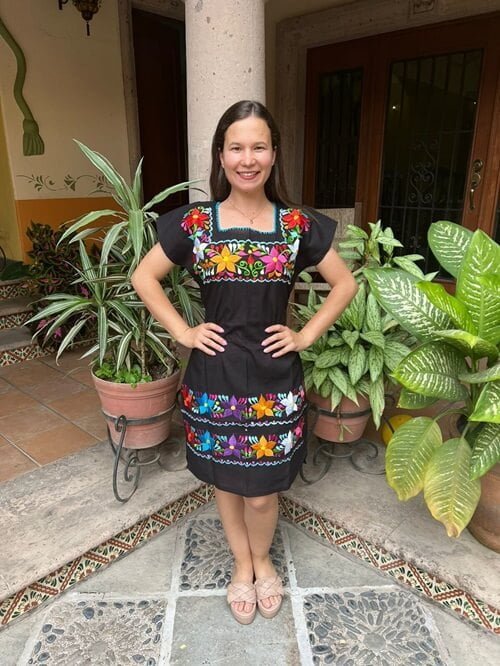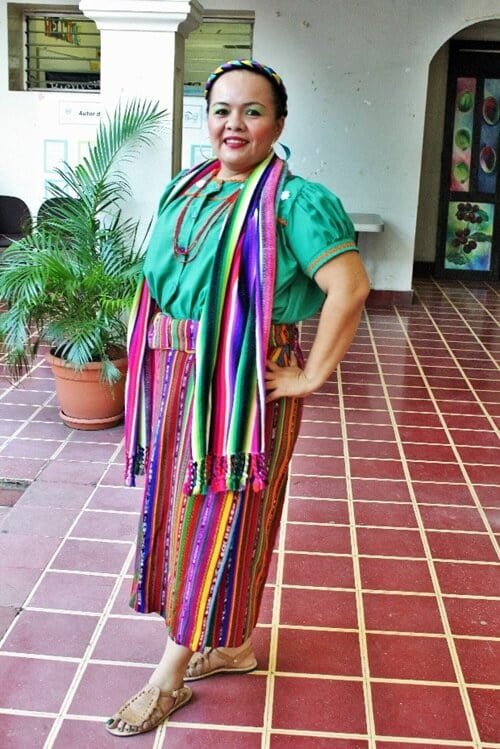Share This Article
Table of Contents Show
El Salvador is a rich cultural country in Central America with a deeply rooted heritage. Its different traditions and customs are complemented by captivating colors and designs. Mexican traditional clothing is characterized by different colors, and Honduras traditional clothing is characterized by different colors. In 2004, traditional clothing lines were changed to meet international standards.
They haven’t taken out the traditional elements of their dresses to make them easily recognizable to the people. Here we share the traditional costumes of El Salvador that you must try if you are visiting.
Traditional clothing of El Salvador is famous for its brilliant colors and exquisite craftsmanship. Each piece is unique. Each traditional Salvadoran costume seems to have an ancient story and legend behind it, which makes people immersed in it. When you want to add some of your personality to these clothes or incorporate some modern trendy elements, custom patches is a good choice. You can customize any pattern you like and sew them on traditional clothing to show your personality and integrate new and old elements.

History of Traditional Clothing of El Salvador
During the colonial period, a mixed-race culture emerged in El Salvador. Women used to wear a combination of Spanish-influenced garments such as blouses and skirts with Huipil. Fusions of styles are reflected in cultural and ethnic manners.
When Spain gained independence in 1821, Traditional clothing symbolized Salvadoran identity. Different communities played their roles in promoting traditional garments with detailed embroidery techniques throughout generations.
Key Elements of El Salvador Clothing
Traditional clothes of El Salvador reflect a blend of traditions and Spanish colonial influences. Here are some of the essential elements of the dressing.
Huipil

This is a loose-fitting sleeveless blouse usually worn by Salvadoran women. It is made up of lightweight fabric with embroidery on colourful prints. Different regions of El Salvador have various patterns and styles.
Corte

El Salvador traditional clothing is incomplete without Corte, which complements the Huipil. It is made up of handwoven fabric and vibrant features. If you are planning to drape El Salvador dress then keep in mind Corte is an essential element of the outfit.
Guipil

The Guipil is a sleeveless blouse that is quite famous among women of El Salvador. You will see the detailed embroidery often paired up with a Corte to enhance the look of a traditional outfit.
Enagua

This is an underskirt dressed under the Corte to give a shape. It adds an elegant touch to the overall attire. Don’t miss out on this to look more presentable.
Montecristo Hat

This hat is loved by many in Central America. A wide-brimmed straw hat is a traditional accessory worn by Salvador men in rural areas. It serves as protection from the sun in sweltering summers.
Calzones

These are loose-fitting pants made of cotton fabric. They are worn by men and provide comfort.
Faja

This is a belt or sash worn around the waist. It is made of bright-colored fabric and adds decorative elements to look more traditional.
Famous Costumes of El Salvador
Women wear typical costumes in different shapes and colors. The following are El Salvador traditional clothing that are everyone’s favorite.
Izalquena

This typical costume shows Pipil heritage in the region of Izalco in Sonsonate. This costume comprises Huipil, Guipil, caushte and caites. These terms are for blouse, skirt and refajo. The outfit includes a bright braid on the head.
Cacaopera

This dress is based on hand-embroidered details. The outfit contains an apron with large pockets embroidered with colorful flowers. Women may wear different accessories to complement this traditional outfit, such as necklaces, bracelets and earrings.
Minguena

Traditional El Salvador clothing typically consists of a flowy skirt quarter above the ankles, a colorful braid on the head, and a blouse with poplin sleeves. For parties, a shawl and hidden sash can be added. A cape is not added to the dress, but you can add the remaining elements to make the appearance pop.
Las Panchas

This dress has two versions: The first is the Pancha de Blanco, which has a dark skirt and a light-colored blouse. Pancho in red is usually worn by single women and black with purple for married women and widows. Embroidery is for single women and the appearance of the skirt can distinguish both costumes.
Volcanena

This costume is from ancient times when it was made of brightly colored silk and is now used in satin to keep up the feature. A Wide skirt and blouse of the same color with lace on both pieces looks beautiful. In past times, women wear a shawl on their heads different from the color of the outfit and its length goes down to the heels.
Nahuizalquena

It has a colourful shawl covering the entire sword and headpiece with hair and colourful ribbons. The blouse has a yoke and flounce which is short and wrapped around the waistband. Buttons are of different colors and as per the tradition.
Campesina

In this outfit, the blouse and the skirt are joined together, which is long up to the heels. The skirt reaches a little below the knees, which is best for special events and celebrations.
FAQS
Traditional El Salvadorian clothes include the Huipil, Corte, Guipil, Enagua, Faja, calzones, and panuelo.
Traditional clothes are still worn in El Salvador during festivals, cultural events, and special occasions.
Yes, tourists visiting El Salvador often purchase traditional clothing from the market.
Final Thoughts
These are the few ideas we have gathered for all who want to dress up in El Salvador clothing. The designs feature simplified images of rural life painted in bright colors. If you haven’t tried these outfits yet then give them a try. It will be a new addition to your closet.


